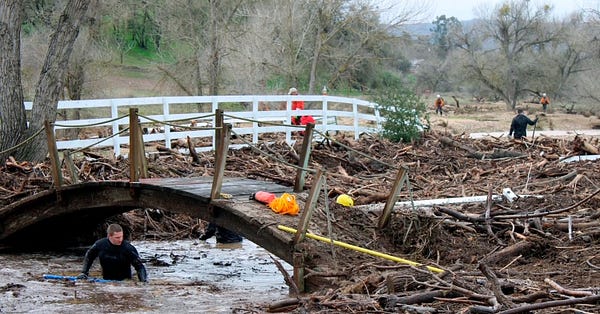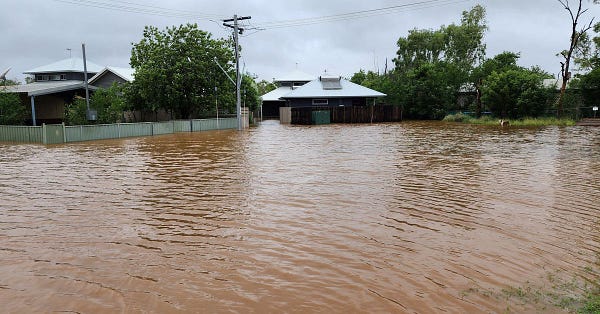Destabilized Saturday Edition #52
Flood waters persist as attention wanes, internet-enabled extremism, Great Salt Lake on life support, "from my cold, dead oven mitts"
Bumpy week here at Destabilized HQ so instead of my usual analysis I’m sharing a few stories that caught my eye because they’re relevant to core Destabilized themes:
In the past, members of Congress who went rogue were punished by party leaders and donors, but today’s highly engaged small donors give politicians the freedom to be rabid, dogmatic, and disruptive. This is a direct result of the internet, which has sparked a gradual ecological transformation of human societies.


Like Floridians, the majority of Californians lack flood insurance, and more torrential storms are forecast to hit the Golden State this weekend and next week. Climate catastrophe = financial catastrophe.
Climate migration is just getting started. If people can’t find safety and opportunity in their home country, they’ll seek it elsewhere. This will be a major ongoing story in the years ahead, and perhaps the single biggest change in human social organization in the 21st century. What will its second order effects be?
My Work
Climate change and housing bubbles (link)
As wildfires, hurricanes, tornados, and other climate change-intensified weather disasters drive insurance companies’ costs higher, they will respond by raising the premiums they charge their customers. Premium increases will be concentrated in the places climate change has increased the risks of property damage the most. This has already started to happen, as Marketplace reported in 2020…
Interesting Reads
Great Salt Lake on track to disappear in five years, scientists warn (link)
Over the last three years, the report says, the lake has received less than a third of its normal stream flow because so much water has been diverted for other purposes. …Dried-up saline lakes are hot spots for dangerous air pollution. Nearly a century after Owens Lake in southern California was drained to provide water to Los Angeles County in the 1920s, it was still the largest source of hazardous dust in the country, according to the U.S. Geological Survey. The pollution has been linked to high rates of asthma, heart and lung disease and early deaths.
Tweets of the Week
This is good and newsrooms should take the opportunity to let a little common sense inform their framing of weather disaster stories:




Extreme Weather Watch


Creeping Fascism Watch




Progress Joy and Hope















